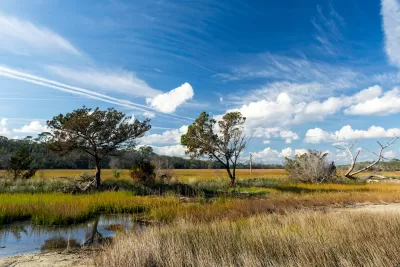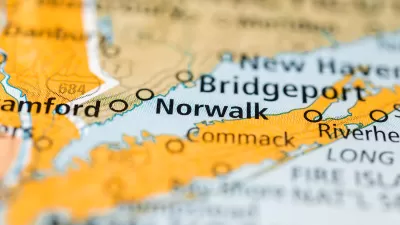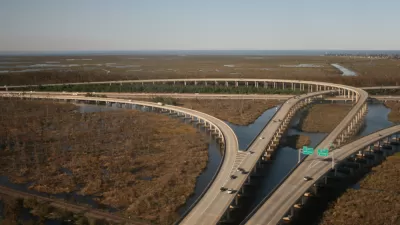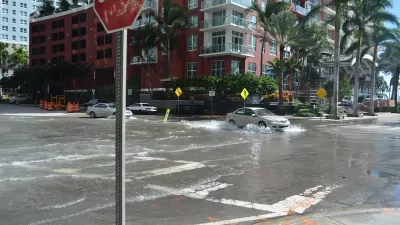When it comes to protecting the state from sea-level rise, Georgia is a step ahead of the rest thanks to a piece of legislation celebrating its 50th anniversary this year.

One hundred miles of coastal salt marsh along the Georgia coast is an integral part of the fabric of the state's identity, wildlife habitat, and natural landscape. Fifty years since a Georgia law was passed to protect the marsh, residents know that the 400,000 acres of tall grasses and shallow, muddy waters are appreciated and secure.
But this wasn't always the case, says Molly Samuel. "The marsh’s value and its beauty might be taken for granted now, but in the late-1960s, there was a proposal to mine Georgia’s salt marsh. To dig it up, then fill it in."
The legislation would later prove itself to be vital to the states future as sea-level rise threatening costal communities in the United States and beyond. Georgia's marshes make up about a third of salt marshland on the Eastern Seaboard, an indispensable buffer between land and sea.
Samuel recounts the history of Coastal Marshlands Protection Act. The desire to develop Georgia's 12 islands "largely owned by wealthy families that used them as vacation destinations" and a phosphate mining proposal turned out the masses during a state hearing on the matter.
Fifty years later, Georgia has a new beast to tackle. "On the Georgia coast, sea levels are getting higher by a little over a tenth of an inch a year, adding up to close to a foot a century," writes Samuel.
Experts say that as the sea-level rises, the marshlands will inch inland. "Georgia is working on ways to adapt to and prepare for increasingly high tides, asking local governments to plan for sea level rise, and protecting open space so that the marshes can keep moving inland," Samuel says.
FULL STORY: How Georgia Protected Its Salt Marsh 50 Years Ago, And Why That’s Important For The Future

Alabama: Trump Terminates Settlements for Black Communities Harmed By Raw Sewage
Trump deemed the landmark civil rights agreement “illegal DEI and environmental justice policy.”

Study: Maui’s Plan to Convert Vacation Rentals to Long-Term Housing Could Cause Nearly $1 Billion Economic Loss
The plan would reduce visitor accommodation by 25% resulting in 1,900 jobs lost.

Planetizen Federal Action Tracker
A weekly monitor of how Trump’s orders and actions are impacting planners and planning in America.

Waymo Gets Permission to Map SF’s Market Street
If allowed to operate on the traffic-restricted street, Waymo’s autonomous taxis would have a leg up over ride-hailing competitors — and counter the city’s efforts to grow bike and pedestrian on the thoroughfare.

Parklet Symposium Highlights the Success of Shared Spaces
Parklets got a boost during the Covid-19 pandemic, when the concept was translated to outdoor dining programs that offered restaurants a lifeline during the shutdown.

Federal Homelessness Agency Places Entire Staff on Leave
The U.S. Interagency Council on Homelessness is the only federal agency dedicated to preventing and ending homelessness.
Urban Design for Planners 1: Software Tools
This six-course series explores essential urban design concepts using open source software and equips planners with the tools they need to participate fully in the urban design process.
Planning for Universal Design
Learn the tools for implementing Universal Design in planning regulations.
Caltrans
Smith Gee Studio
Institute for Housing and Urban Development Studies (IHS)
City of Grandview
Harvard GSD Executive Education
Toledo-Lucas County Plan Commissions
Salt Lake City
NYU Wagner Graduate School of Public Service





























